Top 7 Best Liquid Fertilisers for Different Types of Plants

Welcome to the lush and vibrant world of gardening! If you’re looking to bring life to your garden with stunning blooms and hearty harvests, you’re in the right place. The key? It’s all about finding the perfect fertilizer. But don’t worry, we’ve got you covered with our ultimate guide to the ‘Top 7 Best Liquid Fertilisers for Different Types of Plants’. This list is tailored to meet the unique needs of each plant in your garden.
Whether you’ve got a sunny terrace with colorful flowers or a cozy kitchen corner filled with herbs and veggies, every plant has its own nutrient needs. We’ve carefully selected liquid fertilizers for everything from fragrant roses to homegrown tomatoes and even native Australian plants. Liquid fertilizers are a game-changer with their quick absorption and ease of use. So, put on those gardening gloves and let’s delve into these magical elixirs that will transform your garden into a thriving paradise of health and beauty.
Understanding the Fertilisers

Before we dive into the list, let’s first take a moment to understand what fertilizers are and explore the different types available.
Fertilizers help make plants grow big and strong, and they come in various kinds. The most important fertilizers for plants include both macronutrients and micronutrients.
Macronutrients, which plants need in larger amounts, include Nitrogen for leaf growth, Phosphorus for roots and flowers, Potassium for overall health, Calcium for cell walls, Magnesium for photosynthesis, and Sulfur for proteins.
Micronutrients, needed in smaller quantities, are also crucial. These include Iron for chlorophyll, Manganese for photosynthesis, Zinc for growth, Copper for metabolism, Boron for carbohydrate regulation, and Molybdenum for nitrogen use.
The right balance of these nutrients is essential for healthy plant growth, as each plays a unique role in plant development and health.
Organic Vs Synthetic Liquid Fertiliser
To start with, there are Chemical Fertilizers. These are created in factories and act super fast. They quickly provide plants with the specific nutrients they need. They’re less expensive and give quick results. But, there’s a downside. They can wash away nutrients and might harm the soil if used a lot.
Moving on, we have Organic Fertilizers. These come from natural stuff like dead leaves or animal poop. They’re great for the earth and slowly feed nutrients to plants. They take a bit longer to work, but the results last longer. Plus, they help the soil by encouraging good microorganisms and improving soil structure.
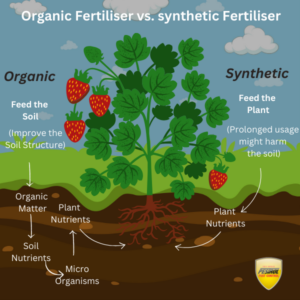
Liquid Vs Slow – Release Fertiliser

Then, let’s talk about Liquid Fertilizers. These guys are thirst-quenching drinks for plants. You can sprinkle them on the leaves or mix them in the soil, and plants can use them immediately.
Also, there are Slow-Release Fertilizers. They gradually give food to the plants over a period.
Liquid fertilizers are often preferred over slow-release ones because they provide nutrients to plants quickly. This is helpful if your plants are showing signs of needing nutrients right away. They are easy to apply evenly, so all your plants get the same amount of food. Also, you can control exactly how much nutrient each plant gets, which helps avoid giving them too much. Even though slow-release fertilizers are good for feeding plants over a long time, liquid fertilizers are great for when you need to see fast results and adjust feeding based on what your plants need right now.
Lastly, we have Specialty Fertilizers. These are tailored like special meals for certain types of plants, such as roses or tomatoes, to provide them with just what they need.
Now, let’s proceed without any more delay and explore the Top 7 Best Liquid Fertilisers you can choose for your plants.
Organic NPK Liquid Fertiliser – For Growth & Flowering
Let’s start with Organic NPK fertilizer, ideal for growth and flowering. This special mix has nitrogen, phosphorus, and potassium – all super important for keeping your plants healthy. It comes from natural stuff like plant extracts and helpful tiny organisms, which is great because it’s safe for our environment and makes the soil better. This mix is just perfect for plants both inside and outside, especially in Australian conditions. It helps seeds start growing and makes plants grow strong and healthy. If you have native plants, try using Plant of Health triple boost, as it’s low in phosphorus, which is better for them. But, just a heads-up, it’s always a good idea to try it out on a small scale first, especially with sensitive plants.
Suitable for: Vegetable Gardens, Flowering Plants, Container plants, Some Indoor plants, Lawns, Herbs, Ornamental Shrubs and Trees.
Not Suitable for Native and wild plants, Succulents and Cacti, Acid-Loving Plants, Orchids and other Specialized indoor plants.

Fruit and Veg Triple Boost Concentrate Liquid Fertiliser 1L
1 reviews $19.90
Triple Boost Pro Strength Liquid Fertiliser 1L
$19.95Seaweed Liquid Fertiliser – Boosts Plant Resilience against Stress
Seaweed Liquid Fertiliser, next on our Top 7 Best Liquid Fertilisers list, is a resilience booster extracted from kelp. It is filled with osmoprotectants, helping plants withstand dryness and salt. It’s a shield against drought, salinity, and extreme temperatures – perfect for Australian gardens. Not only does it promote strong roots and better produce quality and taste, but it also boosts resistance to pests and diseases. It’s not just about growth; it’s about resilience and health.
Suitable for: Vegetable Gardens, Flowering plants and Shrubs, Container plants and house plants, fruit trees, Berry Bushes, Lawns, Seedlings and Young Plants, Ornamental and foliage Plants, Hydroponic Systems and Herbs.
Not suitable for: Plants sensitive to salts like Orchids, ferns, or certain native plants, Acid loving plants like Blueberries, Azaleas and Rhododendrons and Certain Succulents and Cacti that are adapted to grow in nutrient-poor conditions like Lithops, and Purple Coneflower, Lettuce or Basil.

Liquid Seaweed Concentrate
$9.90
Seasol Seaweed Concentrate
2 reviews $11.49
AgroBest Seafil
$21.90Fish Fertiliser – Boost Growth with Rich Nitrogen
Fish fertilizer is made from leftover fish parts like heads, bones, and skin. These parts are usually leftovers from places that process fish for eating. To make the fertilizer, they use a special method to break down these fish parts. This method keeps the good stuff in the fish that helps plants grow. Sometimes, they might add other natural things to make it even better for the plants. In the end, you get this fertilizer either as a liquid, which you can mix with water and pour on the soil, or as a dry form that you can just sprinkle around your plants
Suitable for: Vegetables and Fruits, Flowers and Ornamentals, Lawns and Indoor plants.
Not Suitable for: Sensitive plants, Seedlings, Plants requiring low nitrogen and an overuse on any plant.

Fish Liquid Fertiliser Natra Concentrate 1L
$15.90
Multicrop EcoFish Organic Plant & Soil Nutrient
1 reviews $11.90Liquid Compost – Improves Soil Health & Plant Vitality
Then we have, Liquid composts which are made through a process known as compost tea brewing, In this method, various organic materials such as leaves, manure, or kitchen scraps are submerged in water. Over a period, these materials undergo fermentation in the water. It’s somewhat similar to steeping tea, except with compost ingredients, and it’s a longer process.
During fermentation, the valuable nutrients and beneficial microorganisms from the organic matter leach into the water, transforming it into a nutrient-dense liquid, which is the liquid compost. This method essentially captures the goodness of solid compost in a liquid form, providing an effective way for gardeners to nourish their plants.
Beyond just feeding plants, this liquid compost significantly enhances soil health and plant vitality. It supplies a rich array of nutrients readily absorbed by plants, introduces beneficial soil microbes, improves soil structure and moisture retention, and promotes healthier root systems. By balancing soil pH and reducing chemical dependency, it fosters a more sustainable and environmentally friendly gardening approach, leading to stronger, more resilient plants.
Suitable For: Vegetables and herbs, Flowering plants, Fruit trees & bushes, Seedlings & young plants, Container and raised bed plants Lawn grass and Hydroponic plants.
Not Suitable For: Lavender, Sage, Orchids, Rhododendrons and Azaleas, Succulents and Cacti, African Violets, Camellians and some native wildflowers.
Earthfood Concentrate Organic Fertiliser -1 Litre
1 reviews Original price was: $44.90.$39.90Current price is: $39.90.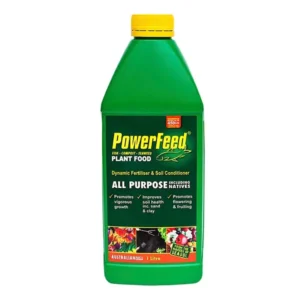
PowerFeed All Purpose Plant Food
3 reviews $11.40Blood and Bones – For Stronger Roots & Lush Foliage
Blood and Bone fertilizer is created from animal by-products, specifically blood and bones from slaughterhouses. It might sound a bit quirky, but it’s a powerhouse of nutrients. The process begins with drying the collected blood, often using a spray drying technique that evaporates the water, leaving behind a nutrient-rich powder. Simultaneously, bones are cleaned, crushed, or ground into fine powder. These two components are then mixed in specific ratios to ensure a balanced nutrient profile, rich in nitrogen from the blood and phosphorus and calcium from the bones. This method not only recycles waste products but also provides an eco-friendly, potent fertilizer for gardening and agriculture, enriching the soil naturally and supporting robust plant growth.
Suitable For: Vegetable Gardens, Flowering plants, Fruit trees & Bushes, Lawns, Shrubs & Perennials, Seedlings & Young Plants.
Not Suitable For: Native plants, Acid-loving plants ( Blueberries, Azaleas and rhododendrons), Nitrogen-sensitive plants, Succulents and cacti, Orchids & other Specialized plants.
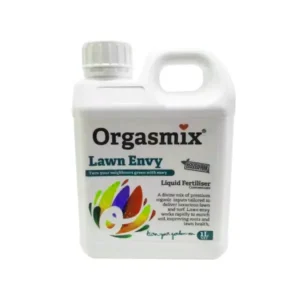
Orgasmix Lawn Envy Premium Fertiliser
$25.90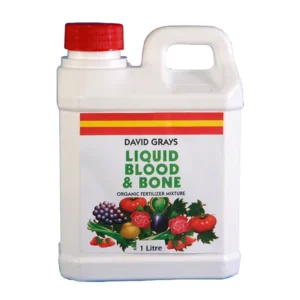
David Grays Liquid Blood and Bone
1 reviews $7.90
Amgrow Nitrosol Liquid Blood & Bone Fertiliser
1 reviews $12.90Egg Shells (Calcium) – Strengthens plant cells and boosts growth
Calcium helps plants by making their cell walls strong and keeping new leaves healthy. It’s kind of like how we need calcium for strong bones. Plants use it to build sturdy cell walls and encourage new growth. This nutrient is a big deal for their overall health and development. If plants don’t get enough calcium, you can usually tell because their leaves and fruit start having problems.
And guess what? There are some natural stuff that are great sources of calcium for plants. Things like eggshells, wood ash, and limestone are perfect for giving plants that extra calcium kick they need. These materials are really effective in making sure your plants get their calcium fix.
Not Suitable For: Acid-loving plants, certain types of beans that prefer low calcium, certain natives and hydroponic systems.

Epsom Salt Fertiliser – Magnesium Sulphate – Aids in flowering and prevents blossom end rot
Finally, Epsom salt, a magnesium sulphate blend. It’s like a secret ingredient for your vegetable garden, making your fruits and veggies bigger and tastier. The blooms get better and brighter.
Peppers, roses, and tomatoes – they have a special love affair with Epsom salt. Growing peppers in pots? They’ll thank you for that extra magnesium boost. Rose bushes? They’ll bloom with gratitude. And tomatoes? Get ready for a flavour explosion and goodbye to blossom end rot!
It’s super easy to use. Just mix about 1-2 tablespoons into the soil or dissolve it in 1 liter of water when planting. For small plants, use less; for larger plants, you can use a bit more. Best times? Spring, when leaves pop out, and post-blooming. Repeat every 4-6 weeks for ongoing support.

Conclusion
Wrapping up our journey through the Top 7 Best Liquid Fertilisers for Different Types of Plants, it’s clear that the right choice can make all the difference in your Australian garden. Whether it’s giving your veggies a boost with Organic NPK, protecting your plants against harsh climates with Seaweed Liquid Fertilizer, or enriching your blooms with Fish Fertilizer, each has its unique charm. Remember, using the right fertilizer is not just about vibrant growth; it’s about being kind to our environment. So, choose wisely and watch as your garden transforms into a lush, thriving paradise, perfectly suited to the Aussie climate. Here’s to a greener, more bountiful garden with every drop of liquid gold!





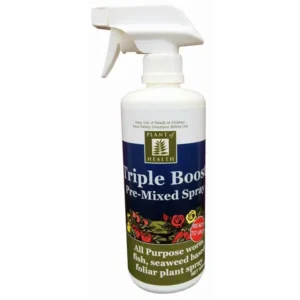








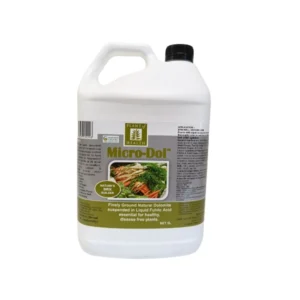
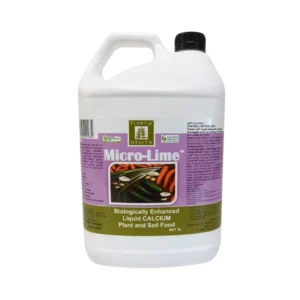
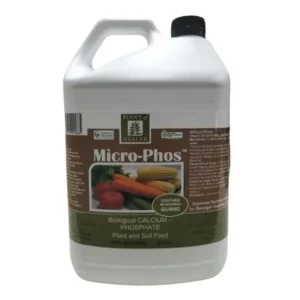

 Mosquito Traps
Mosquito Traps